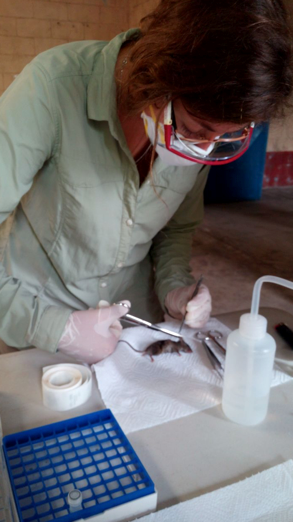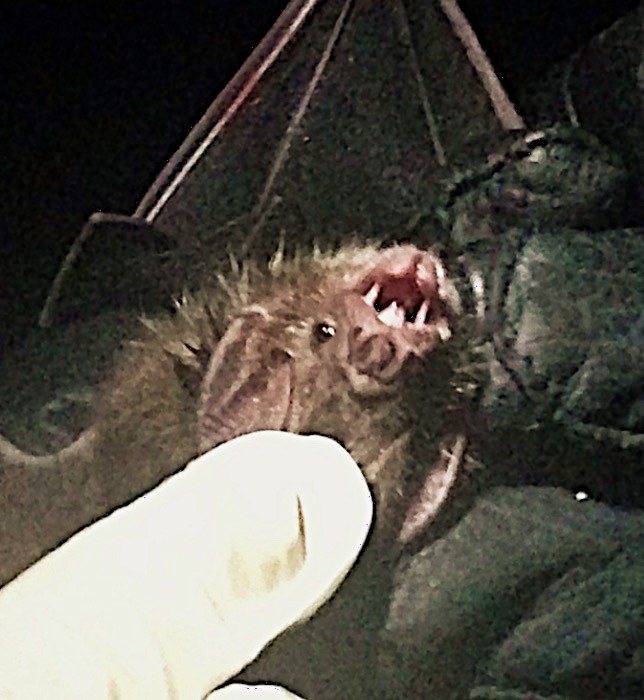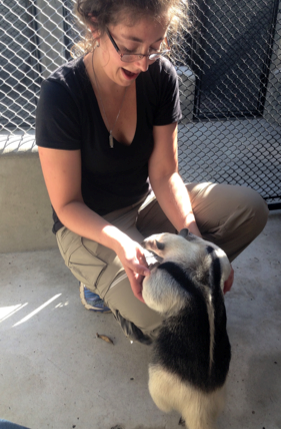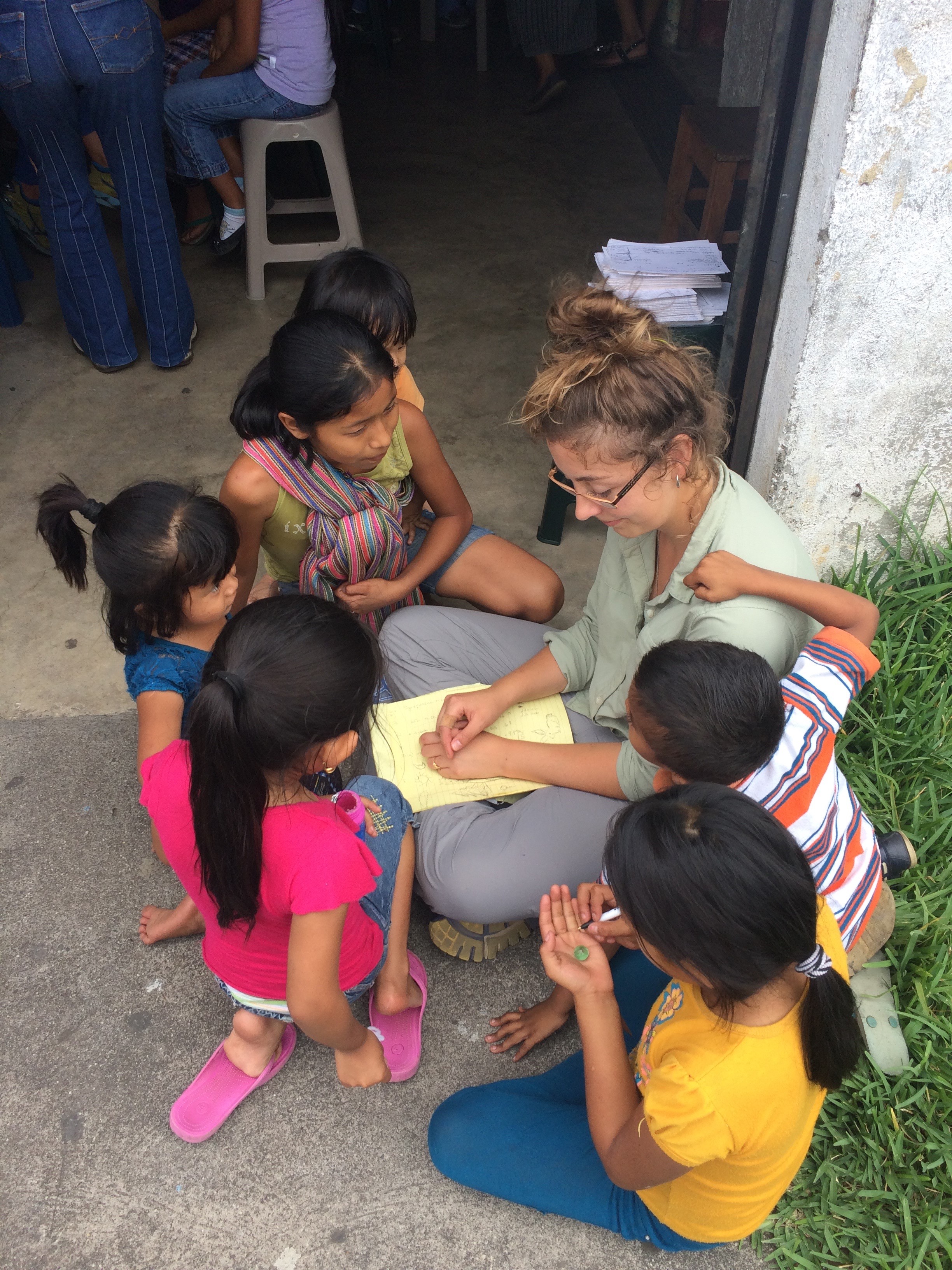Rats, Bats, and Elephants Oh My
 Saturday, December 16, 2017 at 03:27PM
Saturday, December 16, 2017 at 03:27PM Emma Svenson from University of Wisconsin-Madison shares with us her amazing experience working with the CDC in Guatemala and all of the wonderful things she learned along the way.
Bats, rats, and my adventures working with the CDC in Guatemala
I’m sure we’ve all answered the question, “small or large animal?” But unlike many of my classmates, I am not interested in a career in either small or large animal medicine. Rather, I want to work in public health and zoo medicine. In our veterinary school curriculum, we don’t get a lot of exposure to these fields. So, as a first year veterinary student, I arranged to do an independent summer internship in Guatemala, at the CDC’s Global Disease Detection Center for Central America. In July, I boarded a plane, not quite knowing what to expect from my internship.
My adventures started the morning after I arrived in Guatemala City. Our team was traveling to a small town near Guatemala’s coast, Los Lirios, Masagua, Escuintla. I sandwiched myself into a crowded car with two veterinarians from the Universidad del Valle de Guatemala (UVG) and the CDC, a veterinary student from UVG, and a research technician, and away we went. It took me a while to get back into the swing of speaking Spanish, but eventually I understood that we would be researching the prevalence of zoonotic agents, such as bartonella and leptospirosis, in rodents and ectoparasites trapped in houses in the village. We would then try to correlate this disease burden with socioeconomic status, type of housing, and presence or absence of pets in the house. It sounded easy enough to me in the comfortable, air – conditioned car, but fieldwork soon proved to be tougher than I imagined.
 The first night in my hotel at the field site, I awoke to the whir of wings. I pointed the slender beam of my flashlight towards the roof expecting a trapped bird, and instead discovered a small colony of bats whizzing around the rafters. Trained to expect rabies in every bat, I jumped out of bed, woke up one of the veterinarians, and asked what I should do to get the bats out of the room. Laughing, he told me to leave them alone. Insectivorous bat species in Guatemala don’t carry rabies. I still strung up a mosquito net, just in case, and drifted to sleep wondering what surprises the morning might hold.
The first night in my hotel at the field site, I awoke to the whir of wings. I pointed the slender beam of my flashlight towards the roof expecting a trapped bird, and instead discovered a small colony of bats whizzing around the rafters. Trained to expect rabies in every bat, I jumped out of bed, woke up one of the veterinarians, and asked what I should do to get the bats out of the room. Laughing, he told me to leave them alone. Insectivorous bat species in Guatemala don’t carry rabies. I still strung up a mosquito net, just in case, and drifted to sleep wondering what surprises the morning might hold.
The next day, we walked through the village, and placed rodent and flea traps inside homes, if people were willing to participate in the study. We waited overnight, and collected rodents and parasites from the traps the following morning. I discovered that working at our field site in the 90-100 degree heat would be difficult for a cold-loving Wisconsinite like myself. I struggled to collect biopsies and samples from captured mice as sweat dripped into my eyes, and loosened my grip on my scalpel. Yet these challenges only strengthened my resolve to learn more.
Later, we traveled to Los Tarrales National Reserve, near the base of one of Guatemala’s many volcanoes, Atitlan. Previously, researchers collected blood and fecal samples from vampire bats in this park to determine what diseases they carry, sampled the bats’ stomach contents to determine the types of animals the vampires feed on most commonly, and then tracked bats via telemetry to locate their roosts.

This week, we would be capturing more vampires, tagging them, and trying to map their ranges, and locate new roosts within the park, again using telemetry. To catch and tag the bats, we strung up nets near a small pond, and waited until dark for the bats to appear. A majority of our catches were actually insectivore species, but we did eventually catch six vampires. One had recently fed, and exhausted from his capture ordeal, hopped up into our car tire to spend the rest of the night sleeping next to us. We affectionately named him “gordo,” or “fatty” in English.
For the rest of the week, we tracked the tagged bats up and down steep mountain terrain to map out their range distances from known roosts. I was new to cutting my way through a jungle with a machete, or even using the telemetry equipment. We eventually found a likely spot for a roost, a small earthy cave under a bamboo stand. Unfortunately, it had been burnt out, and few bats remained – a sad reminder that humans will hurt and destroy animals that they fear.
 Another week of my internship was spent in Guatemala City. I was able to arrange a visit to the national zoo, where I shadowed veterinarians and zookeepers working on treatments for various animals. For instance, we saw Bombi, a 57-year-old Asian elephant. Bombi has her feet washed and trimmed every day. She is trained to rest her foot through a window on command. She responds to “mano” (hand) by lifting her front feet, and to “pie” (foot) by lifting her hind legs. Recently, she had developed an abscess in a toenail on her left front foot, which was being treated with antibiotics in this unique manner. I also met two baby animals, a spider monkey and anteater, and played with them as part of an enrichment and training program. I felt privileged to see how a unique international training program allowed veterinarians to interact easily with these animals.
Another week of my internship was spent in Guatemala City. I was able to arrange a visit to the national zoo, where I shadowed veterinarians and zookeepers working on treatments for various animals. For instance, we saw Bombi, a 57-year-old Asian elephant. Bombi has her feet washed and trimmed every day. She is trained to rest her foot through a window on command. She responds to “mano” (hand) by lifting her front feet, and to “pie” (foot) by lifting her hind legs. Recently, she had developed an abscess in a toenail on her left front foot, which was being treated with antibiotics in this unique manner. I also met two baby animals, a spider monkey and anteater, and played with them as part of an enrichment and training program. I felt privileged to see how a unique international training program allowed veterinarians to interact easily with these animals.
The next part of my journey took me a small community in the mountains, San Lucas Tolimán. There, I translated Spanish for a group of doctors and medical students from UW- Madison’s School of Medicine and Public Health. Each year, the medical school offers a class on tropical medicine and hygiene in Guatemala, after which students participate in a service- learning trip in rural parts of Guatemala. From San Lucas Tolimán, the group travels to a different community each day to run mobile clinics in places that lack access to healthcare.

At one of these clinics, a little girl was completely fascinated when I explained to her that I was not a “people doctor.” I was studying to be an “animal doctor,” but had an interest in how environmental, human and animal health are linked. At the end of the day, the same girl ran up to me, her hand-woven skirt vivid against the crumbling concrete bricks of the street. She handed me a torn piece of yellow notebook paper, then jumped up and down waving goodbye as our pickup truck rolled away. I smoothed the crumpled sheet and read in uneven letters and broken-Spanish, “Mi Toctora faBorita se llama Enma.” In English, “My favorite doctor is named Emma.”
Overall, my summer in Guatemala allowed me to experience the varied career of a public health veterinarian. I worked with rats one week, and bats the next. I learned so much about the challenges of field research. I explored international veterinary medicine. I saw how an organization like the CDC collaborates with different countries and universities to monitor health. But it was ultimately this simple note reminded me why I am pursuing this unique career path. I want to be the best doctor I can be. I want to do work that will benefit both animals and people, in whatever capacity I can, whether it is through work as a field researcher or as a clinician.
 CDC,
CDC,  Public Health,
Public Health,  guatemala in
guatemala in  Experiences
Experiences 